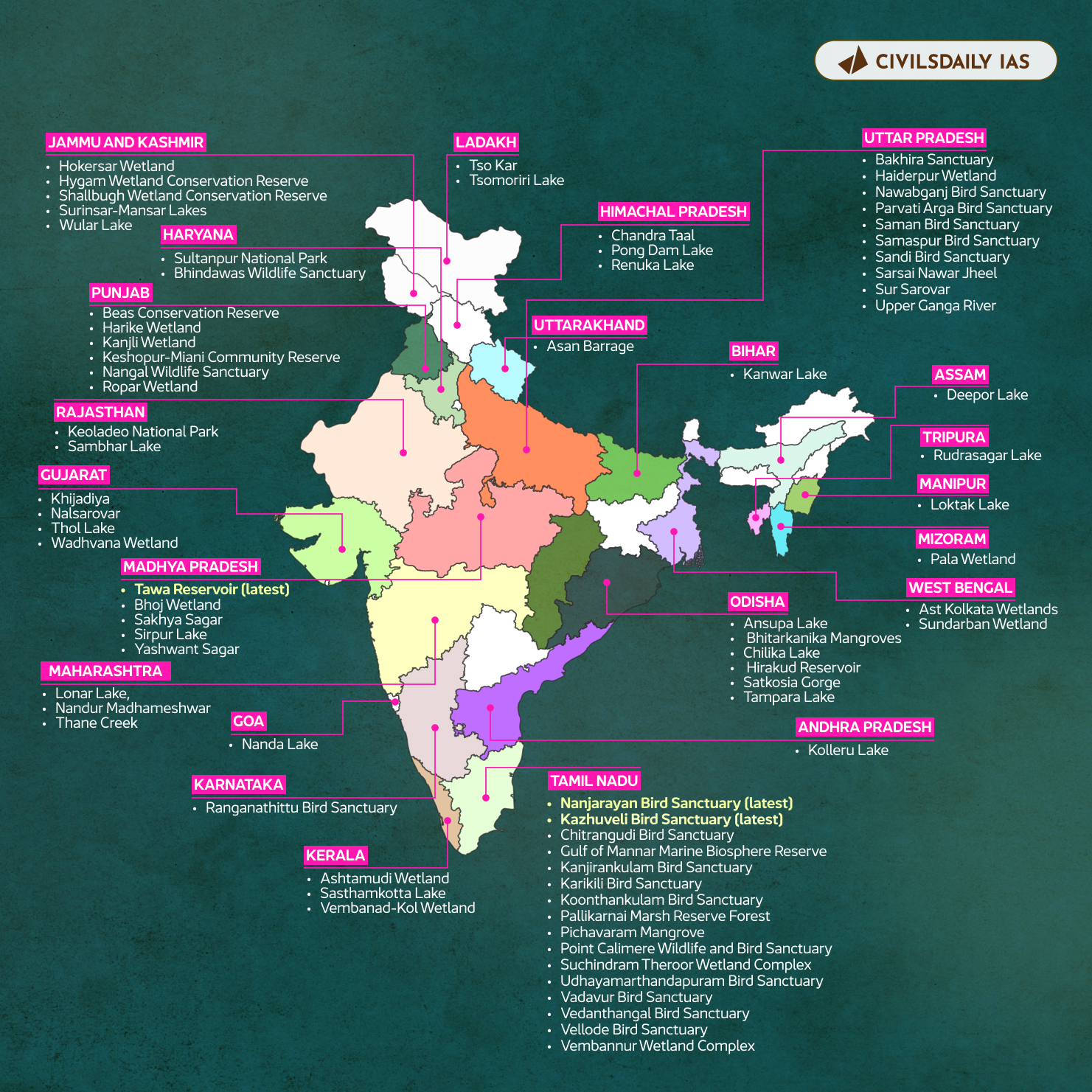Why in the News?
- The Environment Ministry announced the designation of three more wetlands: Nanjarayan Bird Sanctuary (TN), Kazhuveli Bird Sanctuary (TN) and Tawa Reservoir (MP) as Ramsar Sites.
- This makes the total Ramsar sites count in India to 85.
About the newly designated Ramsar Sites:
| Location | Geographical Features | Key Species | Ecosystem | |
| Nanjarayan Bird Sanctuary | Tiruppur District, Tamil Nadu | Located on the banks of Nanjarayan Tank;
~125 hectares |
Herons, egrets, pelicans | Wetland habitats, surrounded by agricultural lands |
| Kazhuveli Bird Sanctuary | Villupuram District, Tamil Nadu | Brackish water wetland near Bay of Bengal;
~5,000 hectares |
Flamingos, pelicans, storks, waterfowl | Mix of freshwater and saltwater habitats, includes mangroves |
| Tawa Reservoir | Hoshangabad District, Madhya Pradesh | Part of Narmada River Basin, foothills of Satpura Range;
~225 sq. km |
Mahseer fish, surrounded by Satpura forests | Aquatic life, forested surroundings |
Important Facts:
|

PYQ:[2019] Consider the following statements:
Which of the statements given above is/are correct? (a) 1 and 2 only (b) 2 and 3 only (c) 3 only (d) 1, 3 and 3 |

